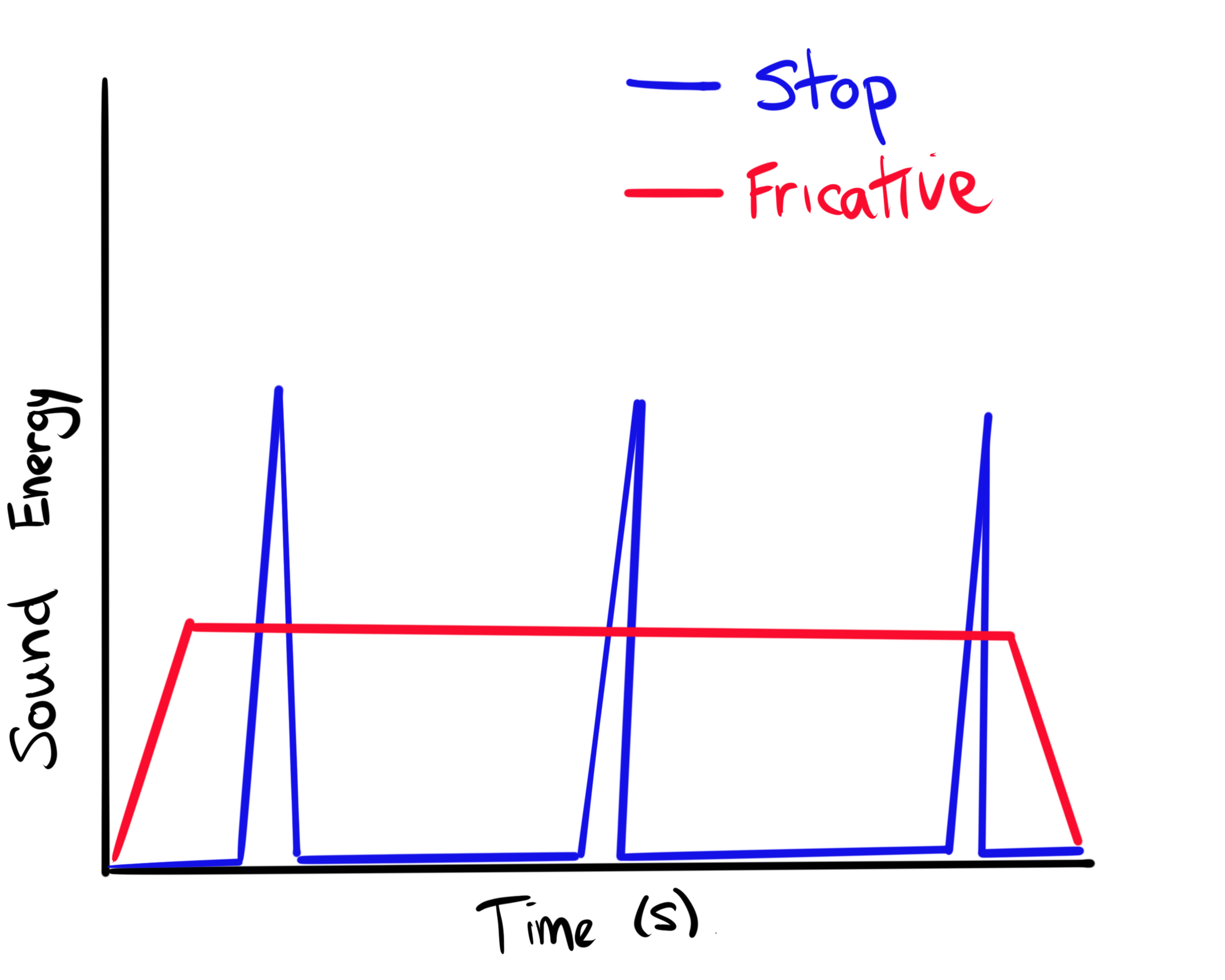The F-Sound
Today, we’re going to discuss the voiceless labiodental fricative - F-sound /f/.
THE SOUND
The F-sound /f/ is produced when air is forced through a narrow turbulent passage made between the top teeth and lower lip. The tongue remains in neutral position and is not a focused target for the F-sound. Instead, you want to imagine you are trying to whistle but instead of pursed lips, you are trying to whistle with the top teeth lightly contacting the lower lip.
For the F-sound /f/, the sound is voiceless (the vocal cords do not vibrate while producing it), and the the voiced counterpart sound is the V-sound /v/.
Verbal cues
Exaggerate your /f/ sound at first. Try to lengthen the duration of the sound to ensure you are getting the fricative property correct. If you cannot hold the sound for a long time, you are not using the correct property.
Visual Cues
The /f/ sound is a very visual sound and can easily be taught by pointing out how the mouth moves while the sound is made.
Use a mirror to see where you place your teeth to make the sound.
Pronounce it yourself a few times in the mirror, pointing to where your teeth are resting on your lips. Encourage him to do the same thing with his mouth in the mirror. The mirror will give him visual feed back to make sure the position of his mouth matches yours.
Tactile Cues
When the /f/ sound is produced correctly, a small puff of air is released from the mouth. You should be able to feel it if you hold your hand in front of your mouth. If you continue to hold the /f/ sound, you should feel a steady stream of air.
THE SOUND IN DIFFERENT POSITIONS.
Here's the sound in different positions of a word.
BEGINNING OF THE WORD - five, phone, father
MIDDLE OF THE WORD - griffin, laughter, elephant, sift
END OF THE WORD - graph, tough, buff, self
*NOTE - Notice how the F-sound can be represented by a PH-letter combination or a GH-letter combination in addition to a F-letter or FF-letter combination.
SITUATIONS THAT SEEM LIKE THE SOUND BUT AREN'T
of - In this specific word, the F-letter is actually pronounced more like a V-sound. The V-sound is actually the voiced counterpart to the F-sound so they are not actually too different from a sound production standpoint but it does impact what sound you are actually making.
WHY IT MAY BE HARD
Some languages do not use the lower lip and upper teeth contact normally for sound production. Therefore, it can be awkward or uncomfortable. Some clients put too much emphasis on the contact and actually bite their own lip, applying too much pressure.
Remember, it should be light contact.
WHAT TO DO
So let's say you do have trouble with your F-sound. What can you do about it.
Well here are the features of the F-sound.
Place of articulation - Between your top teeth and your lower lip. Your lower lip can but doesn’t need to curl inward. Your top teeth should lightly contact your lower lip.
Manner of articulation - Frication. Airflow is turbulent but continuous - like a whistle. It is turbulent because airflow is passing through a narrow passageway. The sound keeps coming out as long as you have air from the lungs to continue the airflow.
Voiced or unvoiced - voiceless (this means the vocal cords do not vibrate while producing the F-sound).
TIPS & EXTRA CONSIDERATIONS
The important consideration for the F-sound is knowing when non-F letter combinations will produce an F-sound. I can’t think of any silent-F letter words so if you see the F-sound, it should be safe to pronounce it.
However, if you see a PH-letter combination, most of the time, it is a F-sound (e.g. phone, phoenix, phobia, graph, autograph, ). But there are exceptions (e.g. shepherd, haphazardly, peephole) where the P and H letters are separated (shep-herd, hap-hazardly, peep-hole).
Another letter combination that produces a F-sound is the GH-letter combination, typically at the middle or end of a word (e.g. laugh, graph, these may produce a F-sound. Once again though, there are exceptions (e.g. ghastly - which is produced with a G-sound and silent H-sound like gastly).
Some clients will put too much pressure in the contact between the upper teeth and lower lip. If you are forcing so much pressure, remember to think about the fricative nature of the sound. Are you building up pressure like a blocked garden hose or popping the cork off a champagne bottle or are you letting out a constant stream. For a fricative, it is more like a constant stream - no sudden build-up of pressure.
A good way to test if you are applying too much pressure is if you can sustain a constant sound. For fricatives, like the F-sound or S-sound, you can hold the sound continuously for 5-10 seconds.
For plosives/stops, like the P-sound or T-sound, the sound can only be heard for a split second or second before you need to recreate it.
If your sound is more similar to a V-sound than a F-sound, it is because you are introducing voicing or vocal cord vibration when you shouldn’t. Put your hand on your neck to feel for a buzzing sensation when you produce the sound. If you feel a buzz, you are making a V-sound, not the F-sound.
Try to really focus on the ‘whistling’ analogy. Whistling is voiceless - your neck does not buzz. By trying to whistle with the correct lower lip placement against your top teeth, you will get the correct sound.
That’s All I’ve Got!
I’m breaking down every single sound down for you so that you can learn how to produce each sound in English accurately. Sometimes, we’ll have easier sounds and sometimes we’ll have harder sounds.
If you’ve grasped this sound, then great! But if you’ve got a tip that might work for others, or you took a while to produce this sound correct but something clicked for you, let me know down below in the comments. My goal is to have a community know what to do when they’re stuck!
Let me know down below if you have any questions!


